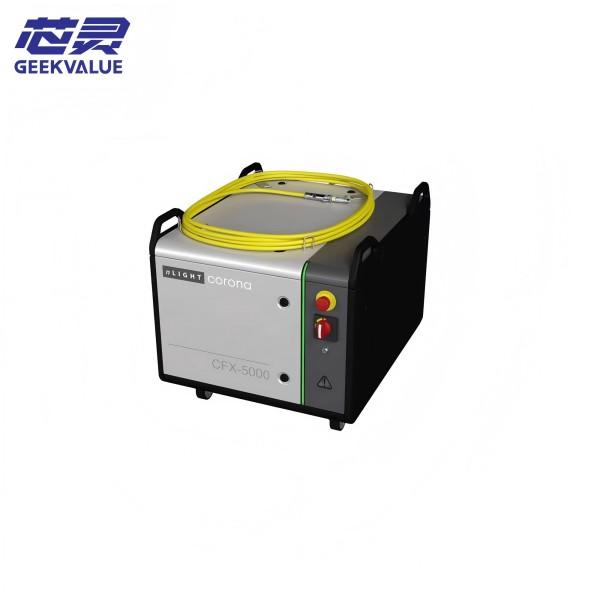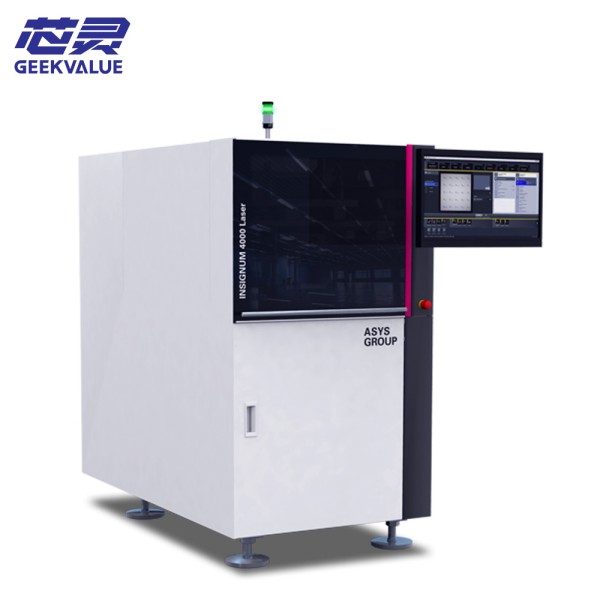nLIGHT is a leading high-power fiber laser manufacturer in the United States. Its products are known for their high brightness, high reliability and modular design. They are widely used in industrial cutting/welding, defense, medical and other fields. Its core technologies include fiber coupling, semiconductor pumping and intelligent control systems.
2. Working Principle
1. Core Principle
Pump source: Multiple single-tube semiconductor lasers (wavelength 915/976nm) are coupled into the gain fiber through a beam combiner.
Gain medium: Ytterbium-doped (Yb³⁺) double-clad fiber, which converts pump light into 1064nm laser.
Resonant cavity: FBG (fiber Bragg grating) is used to form an all-fiber resonant structure.
Output control: Pulse/continuous output is achieved through AOM (acoustic-optic modulator) or direct electrical modulation.
2. Technical advantages
Brightness improvement: nLIGHT's patented COREFLAT™ technology makes the beam quality (M²<1.1) better than traditional fiber lasers.
Electro-optical efficiency: >40%, significantly reducing energy consumption (compared to <15% for CO₂ lasers).
3. Product functions and typical applications
Laser series Features Typical applications
alta® CW/QCW, 1-20kW Thick plate cutting, ship welding
element™ Compact, 500W-6kW Precision processing of consumer electronics
pearl® Pulsed fiber laser, <1mJ pulse energy Lithium battery pole piece cutting, micro drilling
AFS (Defense Series) High brightness directed energy weapon (DEW) Military laser system
4. Mechanical and optical structure
1. Core components
Component Function Fault sensitivity
Semiconductor pump module Provides pump light, life of about 50,000 hours
Gain fiber Ytterbium-doped double-clad fiber, susceptible to bending loss
Combiner Multi-pump light beam combination, easy to age at high temperature
QBH output head Industrial interface, dust/bumps can easily cause beam distortion
Water cooling system Maintain temperature stability of ±0.1℃, blockage can cause overheating
2. Typical structure diagram
Copy
[Pump source] → [Combiner] → [Gain fiber] → [FBG resonator] → [AOM modulation] → [QBH output]
↑ Temperature control system↓ ↑ Water cooling system↓
V. Common faults and maintenance ideas
1. Power drop or no output
Possible reasons:
Pump module attenuation (check current-power curve)
Fiber fusion point breakage (OTDR detection)
Insufficient coolant flow (check filter blockage)
Maintenance steps:
Use a power meter to detect the loss of each section.
Replace abnormal pump module (manufacturer calibration required).
Clean or replace the water cooling system filter.
2. Beam quality deterioration (M² increase)
Possible reasons:
QBH head contamination (alcohol clean end face)
Gain fiber bending radius <10cm (rewiring)
Beam combiner thermal lens effect (manufacturer return required)
Quick diagnosis:
Use a beam analyzer to measure the spot pattern.
VI. Preventive maintenance measures
1. Daily maintenance
Optical components:
Clean the QBH output head with anhydrous ethanol + dust-free cloth every week.
Avoid small radius bending of optical fiber (minimum radius > 15cm).
Cooling system:
Check the conductivity of the coolant every month (should be <5μS/cm).
Replace the filter every quarter.
2. Operating specifications
Safety threshold:
It is forbidden to operate at more than 110% of the rated power.
Wait 5 minutes before restarting after a sudden power outage.
VII. Comparison with competitors (nLIGHT vs IPG)
Indicators nLIGHT alta® 12kW IPG YLS-12000
Electro-optical efficiency 42% 38%
Beam quality M² 1.05 1.2
Maintenance cost Low (modular design) High
Typical failure rate <2%/year 3-5%/year
VIII. Summary
nLIGHT laser achieves high reliability through all-fiber design + intelligent temperature control. The maintenance focus is:
Regularly monitor the attenuation rate of the pump module.
Strictly keep the cooling system clean.
Standardize operation to avoid mechanical stress damage to the optical fiber.
For core component (laser) failure, it is recommended to find a professional maintenance service provider to handle it





